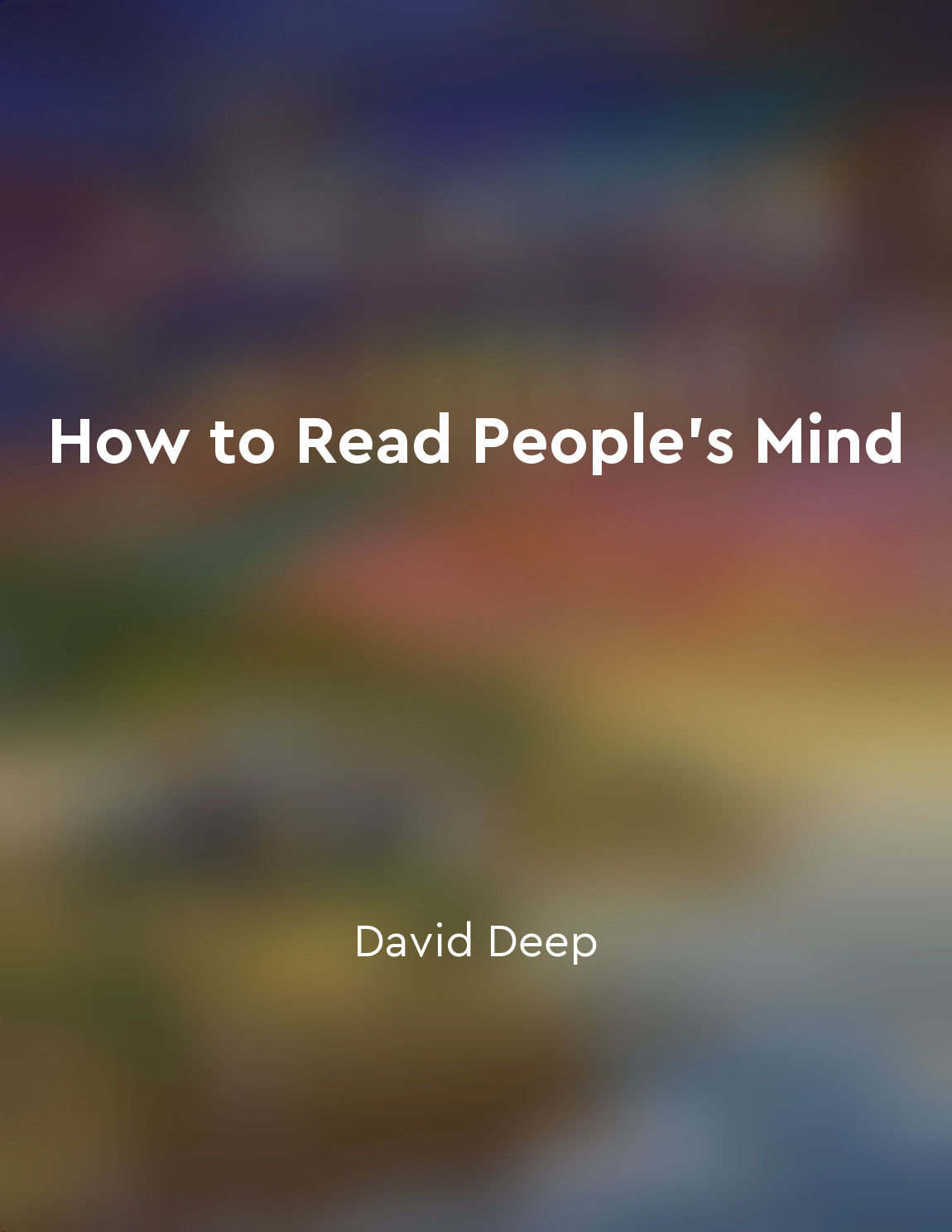Audio available in app
Pay attention to facial expressions and gestures from "summary" of Linguagem corporal by Vitor Santos
Observing facial expressions and gestures is crucial in understanding nonverbal communication. These cues can provide valuable insights into a person's emotions, thoughts, and intentions. Facial expressions, such as a smile or a furrowed brow, can convey a wide range of emotions, from happiness to anger. Similarly, gestures like hand movements or body posture can reveal a person's level of confidence, interest, or discomfort. It is essential to pay close attention to these nonverbal signals because they often reveal more than words alone. For example, a person may say they are fine, but their facial expression may indicate otherwise. By observing both facial expressions and gestures, you can gain a more complete understanding of what a person is trying to communicate. Moreover, facial expressions and gestures can also help you gauge the level of rapport or connection you have with someone. A smile, eye contact, or nod of the head can signal agreement, understanding, or empathy. On the other hand, crossed arms, averted gaze, or fidgeting may indicate discomfort, defensiveness, or disagreement. In social interactions, being attuned to facial expressions and gestures can help you navigate conversations more effectively. By responding appropriately to nonverbal cues, you can show empathy, build trust, and establish rapport with others. This can lead to smoother communication and stronger interpersonal relationships. In professional settings, understanding nonverbal communication can also be beneficial. For instance, during a job interview, paying attention to the interviewer's facial expressions and gestures can help you gauge their interest in your responses. Adjusting your own nonverbal cues accordingly can enhance your chances of making a positive impression.- Being mindful of facial expressions and gestures is an essential skill in effectively interpreting nonverbal communication. By observing these cues closely and responding appropriately, you can enhance your communication skills, build stronger relationships, and navigate social interactions more effectively.
Similar Posts
Transactional analysis offers insights into human behavior
Transactional analysis provides a unique perspective on human behavior, shedding light on the complex interactions that occur b...
Confidence is key in delivering impactful speeches
Confidence plays a crucial role in the delivery of impactful speeches. When a speaker exudes confidence, it not only captivates...

Maintain good eye contact to convey confidence and trustworthiness
To convey confidence and trustworthiness, it is essential to maintain good eye contact during conversations. Eye contact is a p...
Conflict resolution is a necessary skill in human interactions
Conflict resolution is like the oil in the engine of human interactions. Without it, the whole system seizes up and eventually ...
Ask openended questions to encourage further dialogue
The way we ask questions during a conversation can have a significant impact on the depth and quality of the dialogue. Open-end...
Building trust is fundamental
To be successful in persuasion and influence, one must understand the importance of building trust. Trust is the foundation upo...
Show appreciation and gratitude towards others
One of the most effective ways to attract people to you like iron to a magnet is by showing appreciation and gratitude towards ...

Context is key in deciphering people's motives
Understanding people's motives can be a complex task that requires careful observation and analysis. One crucial element in dec...
Being aware of one's own biases is crucial for effective listening
It is essential to recognize that each of us carries biases within us. These biases can influence how we listen to others. If w...

Selfawareness leads to better understanding of others
Self-awareness is a crucial component of effective communication and interpersonal skills. When we are self-aware, we are bette...

